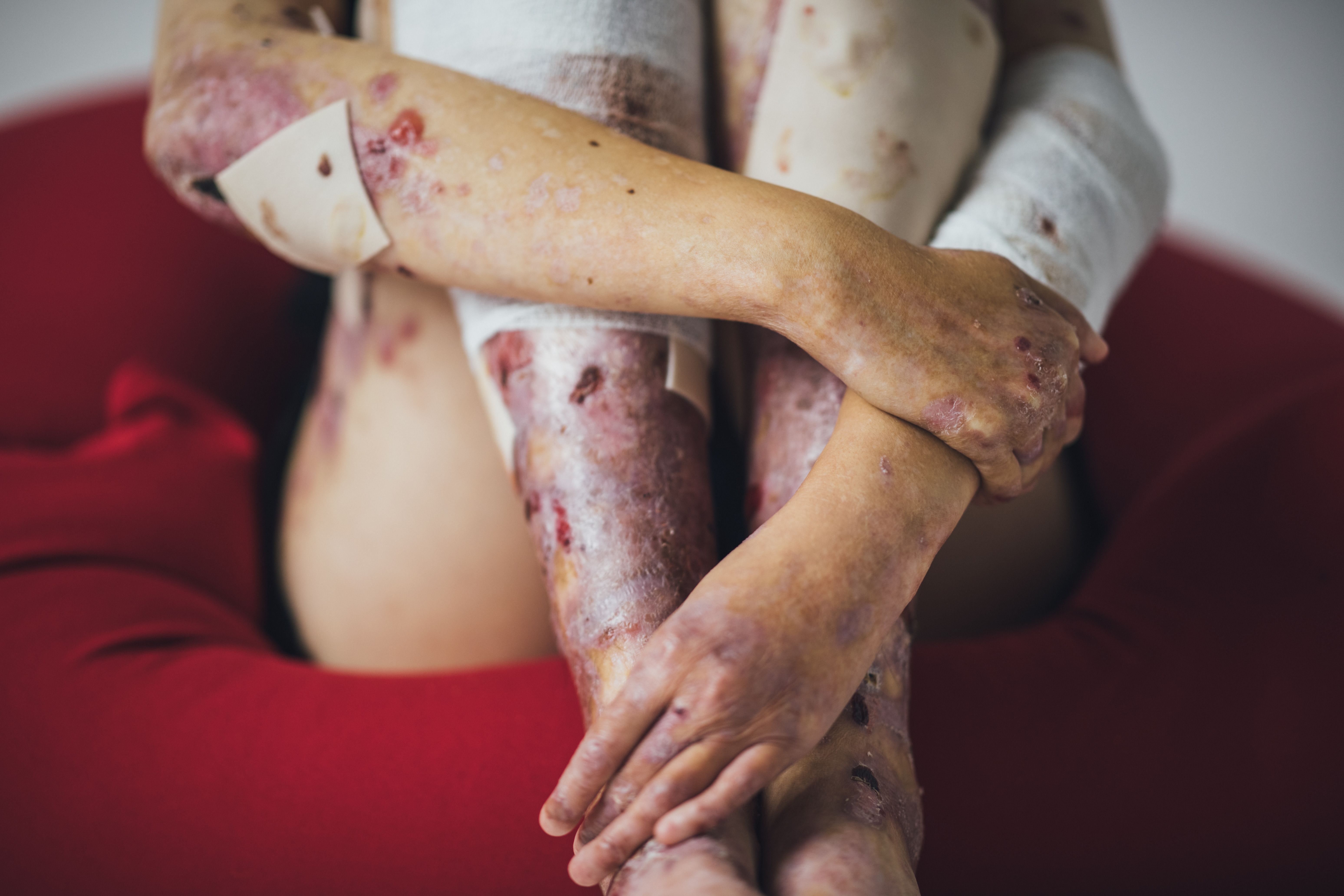- Acne
- Actinic Keratosis
- Aesthetics
- Alopecia
- Atopic Dermatitis
- Buy-and-Bill
- COVID-19
- Case-Based Roundtable
- Chronic Hand Eczema
- Chronic Spontaneous Urticaria
- Drug Watch
- Eczema
- General Dermatology
- Hidradenitis Suppurativa
- Melasma
- NP and PA
- Pediatric Dermatology
- Pigmentary Disorders
- Practice Management
- Precision Medicine and Biologics
- Prurigo Nodularis
- Psoriasis
- Psoriatic Arthritis
- Rare Disease
- Rosacea
- Skin Cancer
- Vitiligo
- Wound Care
Article
Reviewing New Treatment Approaches for Epidermolysis Bullosa
Author(s):
Jemima Mellerio, MD, covered recent developments for managing epidermolysis bullosa and the challenges of studying rare diseases.
Jemima Mellerio, MD, FRCP, of St John’s Institute of Dermatology in London, United Kingdom, discussed epidermolysis bullosa (EB) management in her presentation of Part I of the Hurwitz Lecture series, “New Treatment Approaches for Epidermolysis Bullosa” at the 2023 Society for Pediatric Dermatology Meeting in Asheville, North Carolina July 13-16. Mellerio joined the meeting virtually to present the rapid development of management approaches of EB. She stated, “We’re on the cusp of having better treatment options for those with EB.”
Mellerio began her presentation by discussing cell therapy and the questions that need to be asked, including what type of cell, whether the cells are allogeneic or autologous, and whether the method of delivery will be local or systemic. She noted that intradermal allogenic fibroblasts can speed wound healing, but the injection is extremely painful.
To treat patients with recessive dystrophic EB (RDEB), Mellerio explained the use of heterogeneous bone marrow-derived cells, which play a role in immune regulation, cell growth, and tissue repair. This also has an anti-inflammatory effect. Mellerio also showed the improvement of RDEB patients treated both intradermally and intravenously with mesenchymal stromal cell therapy.
The next therapy presented was gene therapy. This therapy shows success in treating EB but over time the effects deteriorate. Studies are still being performed and there is a possibility of using gene therapy to treat other diseases.
Protein replacement therapy to treat RDEB was also presented. Protein therapy can be administered intravenously or intradermally. Studies on this therapy have shown some wound healing and reduction in pain.
Mellerio also discussed repurposing drugs such as gentamicin, birch bark extract, dupilumab, and others to treat EB. Gentamicin has shown success in treating RDEB with nonsense mutations. An open label single arm trial of losartan for treating RDEB fibrosis in 29 children showed positive results and awaits publication.
Mellerio touched on gene editing in treating EB, highlighting various platforms, such as zinc finger nucleases (ZFN), transcription activator-like effector nucleases (TALENs), clustered regularly interspaced short palindromic repeats (CRISPR-Cas9), base editing, and prime editing.
Researchers face several challenges in finding new treatment options. These include the difficulty of finding patients for studies and the cost of clinical trials, even with repurposed drugs. She also said, “We have to be aware that EB is not an easy thing to live with” and that asking patients to participate in studies could propose an additional burden.
Reference
- Mellerio J. New treatment approaches for epidermolysis bullosa. Hurtwitz lecture Part 1. Session presented at the 2023 Society for Pediatric Dermatology Meeting; July 13-16, 2023; Asheville, NC.
Newsletter
Like what you’re reading? Subscribe to Dermatology Times for weekly updates on therapies, innovations, and real-world practice tips.

















